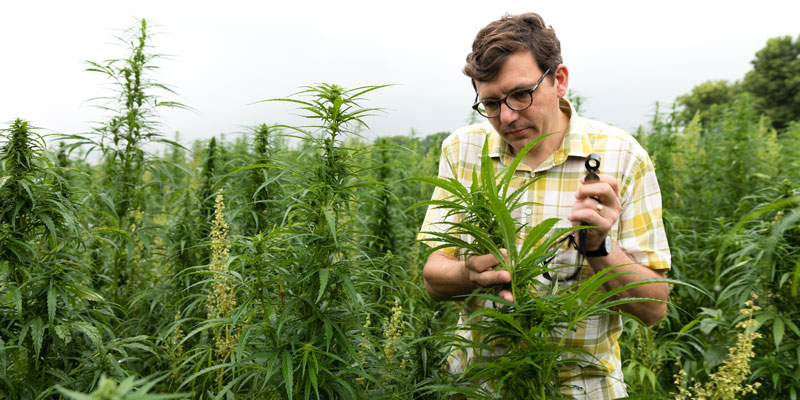Field trials allow researchers to determine what varieties of industrial hemp grow best in different parts of Minnesota.

If you had visited a farm field in Minnesota before World War II, you might have come across a crop you would not today: hemp. In fact, hemp was one of the state’s first industrial crops. It has surged in popularity in recent years as an ingredient in food, personal care products, clothing and even construction materials. Sales of hemp-based products make up a $600-million annual market in the United States alone, but nearly all of those products are imported.
Minnesota’s climate is well suited to growing hemp, but it hasn't rejoined corn, soybeans and wheat as a commercial crop despite its economic potential because it is a variety of Cannabis sativa, the same species as marijuana. But the two are quite distinct. Industrial hemp contains very little tetrahydrocannabinol, or THC, the psychoactive ingredient in marijuana.
Although the distinction between marijuana and hemp may seem obvious, the Agricultural Act of 2014, commonly known as the Farm Bill, was the first time the difference was recognized under U.S. federal law.
George Weiblen, a Distinguished McKnight University Professor in the College of Biological Sciences, started to disentangle the genetics of cannabis more than a decade ago. In 2015, he published a study that pinpointed the genes that distinguish hemp from marijuana. That same year, the Minnesota Department of Agriculture (MDA) launched the Industrial Hemp Pilot Program to assess growth, cultivation and marketing of the crop. Given the Weiblen lab’s expertise in cannabis genetics, a collaboration quickly formed with MDA and the Minnesota Crop Improvement Association. Two members of the Weiblen lab — Jonathan Wenger and Clemon Dabney — work on the project.
“After many years of restricted lab research, I’m thrilled to be able to bring hemp into the light of day in Minnesota and into a field setting,” Weiblen notes.
Weiblen's team planted a dozen varieties of hemp from Canada at five different sites across the state. The pilot study is focusing on hemp grain yield, mainly used for oil and food. To assess which varieties are most suitable for growing conditions, staff track growth, pests and yield. This will reveal which varieties from our northern neighbor thrive in Minnesota and which provide the highest yield come harvest time.
“Ten years ago I could not have imagined that we would come this far with hemp research,” Weiblen says. He is optimistic that industrial hemp is on the state’s horizon once more.
—Claire Wilson